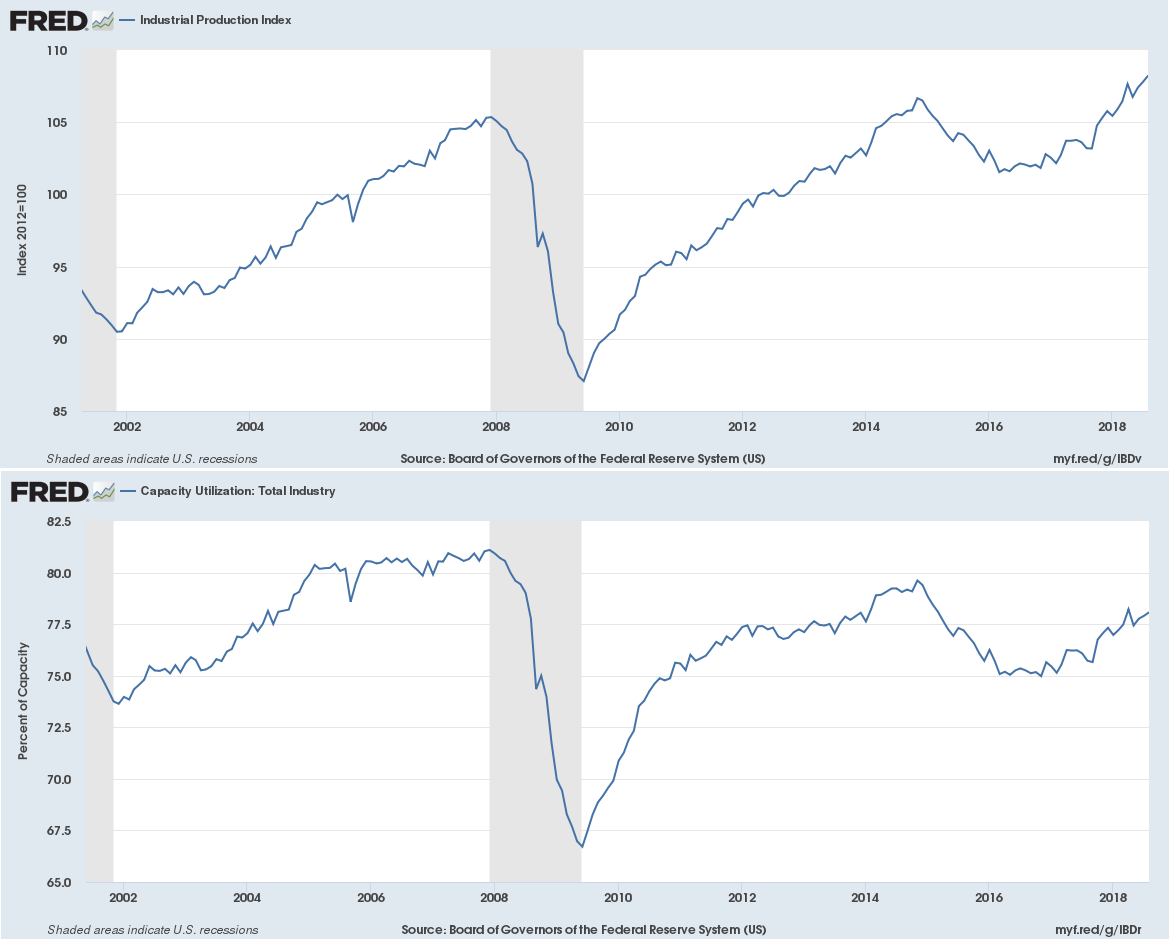Ahead of the data releases today, this post elaborates on why these indicators matter for the economy and what exactly they show.
To begin with, Capacity Utilization refers to how much of available production ability has been used in the past month as a percentage of the total production ability. Naturally, the higher the Capacity Utilization rate used, the better for the economy given that it is reaching better levels of production and is producing more goods. In essence, the closer Capacity Utilization is to 100%, the more the economy is producing and does not leave economic resources sitting idle and hence the higher the inflation rate should be. A simple statistical exercise suggests that Capacity Utilization has a small but positive effect on inflation. Thus, Capacity Utilization also matters for monetary policy, given that if it is low, then inflation is likely to have been subdued and will likely continue to remain at low levels. This, combined with high unemployment levels can signify the rise of deflation risks. In addition, a large excess capacity suggests that no significant investment is needed in order to boost the economy and hence stimulus should suffice. For example, the drop to 66% in 2009 suggested that additional capacity was available and pumping money into the economy via fiscal policy should have worked.
In combination with Capacity Utilization, the Index of Industrial Production measures the volume of goods produced by various industrial firms such as factories, mines, utilities, and publishing. The Index is set to be 100 in 2012 and hence Industrial Production is essentially compared not only to the last period (via the growth rate) but with the 2012 level. The Index assists Central Banks understand how industrial production has fared over the previous period, while it also allows us to observe whether the increase in inflation is also coupled with an increase in industrial production and hence can be attributed to demand or supply sources. If prices are increasing without industrial production moving, then we can expect that price changes are not due to demand factors. On the other hand, if industrial production increases, we can expect that demand-side inflation will also be increased in the future.
Click here to access the HotForex Economic calendar.
Want to learn to trade and analyse the markets? Join our webinars and get analysis and trading ideas combined with better understanding on how markets work. Click HERE to register for FREE! The next webinar will start in:
[ujicountdown id=”Next Webinar” expire=”2018/10/16 14:00″ hide=”true” url=”” subscr=”” recurring=”” rectype=”second” repeats=””]
Dr Nektarios Michail
Market Analyst
HotForex
Disclaimer: This material is provided as a general marketing communication for information purposes only and does not constitute an independent investment research. Nothing in this communication contains, or should be considered as containing, an investment advice or an investment recommendation or a solicitation for the purpose of buying or selling of any financial instrument. All information provided is gathered from reputable sources and any information containing an indication of past performance is not a guarantee or reliable indicator of future performance. Users acknowledge that any investment in FX and CFDs products is characterized by a certain degree of uncertainty and that any investment of this nature involves a high level of risk for which the users are solely responsible and liable. We assume no liability for any loss arising from any investment made based on the information provided in this communication. This communication must not be reproduced or further distributed without our prior written permission.



















